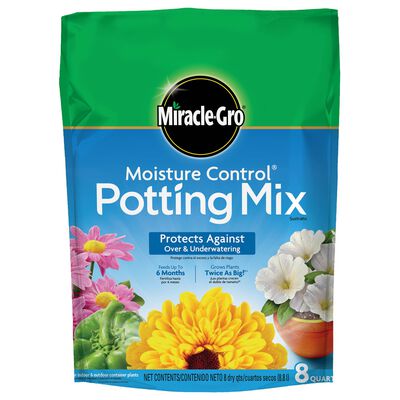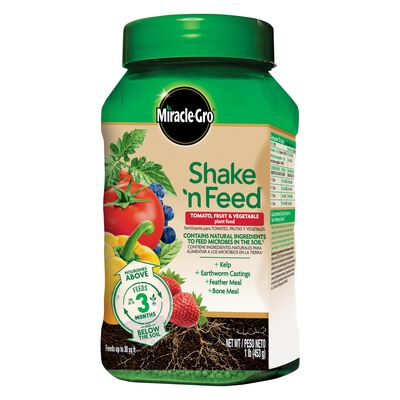
How to Grow Raspberry Bushes
Growing your own raspberry bushes is easy, and the plants will reward your efforts with lots of delicious harvests.
- Select a spot in full sun with rich, well-drained soil.
- Pick out plants that will grow well in your hardiness zone.
- Improve the soil.
- Plant raspberry bushes 3-4 feet apart and install a post and wire system for support.
- Water raspberry bushes regularly during the summer. Cut back on watering during the winter.
- Feed raspberry bushes in the spring, through early July.
- Harvest regularly to keep plants producing.
Raspberry bushes are easy to grow and yield an impressive harvest. A few bushes will give you enough fruit to eat, preserve, and share. Berries are a fantastic source of antioxidants, vitamins, and fiber. They're also delicious. And, when you grow your own you're sure to harvest at the peak of freshness.
Here's how to grow your own raspberry bushes.
Where to Grow Raspberry Bushes
Raspberry bushes grow best in full sun (at least 6-8 hours), in rich, well-drained soil. Gardeners from zone 3 all the way to zone 10 can grow raspberries successfully, given the right variety. Read plant descriptions carefully when purchasing and select plants that will thrive in your growing zone. Raspberries are self-fertile, so you do not need to plant different varieties to cross pollinate.
Because of their sprawling habit and need for sturdy support, the best place to grow raspberries is in a row at along the property line. Do not grow raspberries in the same garden bed where tomatoes, peppers, eggplants, or other nightshade plants have grown. Those plants can harbor verticillium wilt, a disease that will affect the raspberry bushes.

How to Plant Raspberry Bushes
Plant raspberry bushes with 3-4 feet between bushes. Many raspberry bushes are sold as bareroot plants. To plant a bareroot raspberry plant, first soak the plant roots in lukewarm water for an hour. Then, dig a hole that is twice as wide and just as deep as the length of the roots. Create a 50:50 blend with the soil you removed and aged compost-enriched Miracle-Gro® Performance Organics® All Purpose In-Ground Soil, to add nutrients and organic matter to help your raspberry bushes thrive.
Make a mound of this blended soil in the hole and place the roots on the mound, spreading them out. Fill in around the roots, firmly press down the soil so it is even with the surrounding ground, and water well. Plant container-grown plants by digging a hole just as deep and twice as wide as the root ball. Place the plant in the hole and fill in around the root ball. In both cases, water well after planting.
Right after planting, cut the canes (stems) back to 3 inches above the soil line. New growth will emerge from beneath the soil. You can plant raspberries any time when the ground is not frozen, but late spring is best. Apply 2-3 inches of mulch around the plants to help keep the soil evenly moist during the growing season.
How to Stake Raspberry Bushes
Raspberry bushes need sturdy support to grow in a (somewhat) orderly fashion. The easiest way is to set up a post and wire system. Build T-posts with two crossbars—one at the top and one in the middle of the post. Place T-posts every 5-8 feet along the row of raspberries. Run wires between the crossbars to create a lattice system. This will keep the plants up off the ground, and slightly contained. (Raspberries are vigorous growers.)
How to Water Raspberry Bushes
Keep raspberry bushes evenly watered during the summer. Check regularly and water whenever the top inch of soil is dry. Drip irrigation or a soaker hose system is ideal for consistent moisture. Do not water during the winter, though, as that could cause the roots to rot.

How to Prune Raspberry Bushes
Raspberries produce fruit in the spring on second year branches (called floricanes), or in the fall on first year branches (called primocanes). Here’s how you tell them apart: First year branches only have fruit at the ends of the branches, while second year branches produce fruit along the entire branch. In the spring, prune first year branches to 3-4 feet tall. Prune second year branches to the ground after they fruit.
How to Feed Raspberry Bushes
One excellent way to ensure your raspberry bushes grow and perform their best is to use Miracle-Gro® soil and plant food together to create a nutrition-filled growing environment. A month after planting, begin using the Miracle-Gro® Performance Organics® Garden Feeder to fertilize the bushes with Miracle-Gro® Performance Organics® Edibles Plant Nutrition, which gives plants an instant boost of just the right kind of nutrition. The GardenFeeder saves you time by feeding while you water—no extra time required. Feed every 7 to 14 days during the growing season, following label directions. Then, stop feeding in early July so your plants can begin entering their dormant period for the season. Begin fertilizing established raspberry bushes in the spring after you prune them.
How to Harvest Raspberries
Raspberries are easy to pull off the plant one at a time when they’re ripe. Unwashed, berries will keep in the refrigerator for 3-5 days. Once the fruits start ripening you’ll need to harvest daily.


